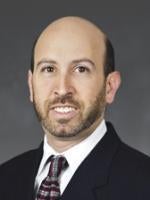An unsupported demand letter cannot constitute an actual attempt by the Equal Employment Opportunity Commission (EEOC) to engage in the required pre-lawsuit conciliation process, according to a federal judge in Ohio. EEOC v. OhioHealth Corp. (S.D.Ohio June 29, 2015). In one of the first cases to review the sufficiency of EEOC conciliation efforts after that review was authorized by the U.S. Supreme Court in its April Mach Mining decision, it is clear that courts are not willing to rubber stamp the EEOC’s purported conciliation efforts and will delay the lawsuit until actual conciliation takes place.
Insufficient Conciliation Efforts Often Frustrate Employers
If the EEOC finds reasonable cause to believe that employment discrimination occurred, it is required to try to eliminate the alleged discrimination through informal conference and conciliation with the employer. The goal is to get the employer to voluntarily comply with federal discrimination laws and resolve the alleged discrimination privately. In fact, the conciliation process is a necessary precondition to the EEOC filing a discrimination lawsuit against the employer. The EEOC is prohibited from suing the employer until after its conciliation efforts have failed.
At times, employers have been frustrated by a lack of real conciliation efforts, particularly in cases where the EEOC seems to prefer going to court rather than settling with the employer. The Mach Mining decision was a win for employers as it allows an employer to ask a judge to conduct a limited review of the EEOC’s conciliation efforts before a lawsuit goes forward.
EEOC’s Affidavit on Its Conciliation Efforts
The Supreme Court had explained in Mach Mining that a sworn affidavit from the EEOC describing its conciliation efforts would usually suffice to show that it had met its obligations. Many who analyzed that statement feared that an EEOC affidavit would effectively end the employer’s challenge to the sufficiency of the EEOC’s conciliation efforts, resulting in an empty judicial review. But Judge Frost’s decision out of the federal court in the Southern District of Ohio shows that is not the case.
In this case, the EEOC submitted an affidavit that stated that the EEOC had issued a reasonable cause determination letter that invited the parties to join “in reaching a just resolution of this matter” and stating that “conciliation of this matter has now begun.” The affidavit further states that over one month, the EEOC communicated with the employer, OhioHealth, including sending a conciliation proposal which was rejected. The EEOC then sent OhioHealth a final letter stating that conciliation efforts had not been successful.
OhioHealth countered the EEOC’s affidavit by providing its own declaration which stated that the EEOC had made a take-it-or-leave-it demand and failed to provide any information to back up its demand. Even though the EEOC’s determination letter had indicated that a commission representative would prepare a dollar amount that included lost wages and benefits, applicable interest and any appropriate attorney fees and costs, no such calculation was ever provided by the EEOC to OhioHealth. OhioHealth stated that it remained ready and willing to negotiate but that the EEOC instead declared that conciliation efforts had failed.
Judge Frost ruled that the EEOC’s “bookend” letters – first declaring the conciliation process open and then closed -- did not constitute an actual attempt at conciliation. He wrote that without the EEOC providing the calculation of the charging party’s damages to OhioHealth, the parties could not shape their positions and the “conciliation process could have been nothing but a sham.” The judge ordered that the EEOC’s lawsuit against OhioHealth be stayed for 60 days while the EEOC engaged in good faith conciliation.
Judge Frost went on to offer a cautionary note to the EEOC. He was disturbed by the EEOC’s statements that it simply would not reach a private resolution of this matter via conciliation and that only a public resolution would be possible. He admonished the EEOC, stating that its position was “ridiculous” and defied the statutory scheme, binding case law, the court and common sense. He wrote that if the EEOC failed to engage in good faith efforts at conciliation as ordered, the court would impose all available consequences, including contempt and dismissal of the lawsuit. Pretty strong words indeed!
Lessons for Employers
Although this is only one court’s review of one conciliation process, employers should be pleased that the Mach Mining decision may have teeth, with courts taking a serious look at the actual conciliation efforts being made. If faced with a reasonable cause determination from the EEOC (and assuming you do not want to go to court), make certain to engage in conciliation by responding to the EEOC’s communications. If the EEOC makes a settlement demand, ask for the calculation of damages that supports the demand. Remain ready and willing to negotiate and document that willingness in writing. And if the EEOC files a lawsuit against you without first making real conciliation efforts, consider seeking a stay of the case by asserting that the EEOC failed to meet a condition precedent to filing the lawsuit.



 />i
/>i

